Museo del Design del Friuli Venezia Giulia – Associazione di Promozione Sociale
P. IVA e CF 02863400301 – info@mudefri.it
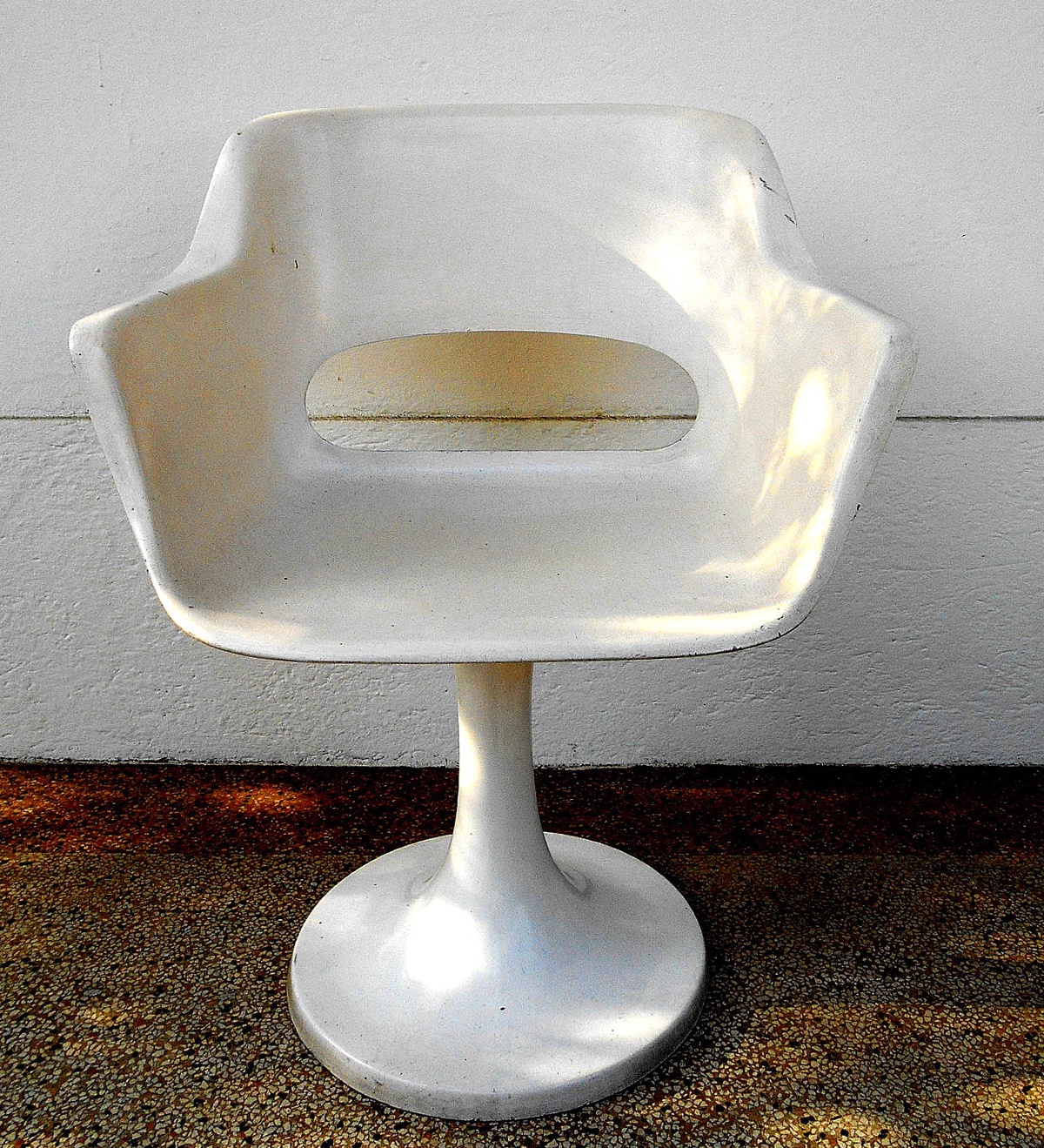
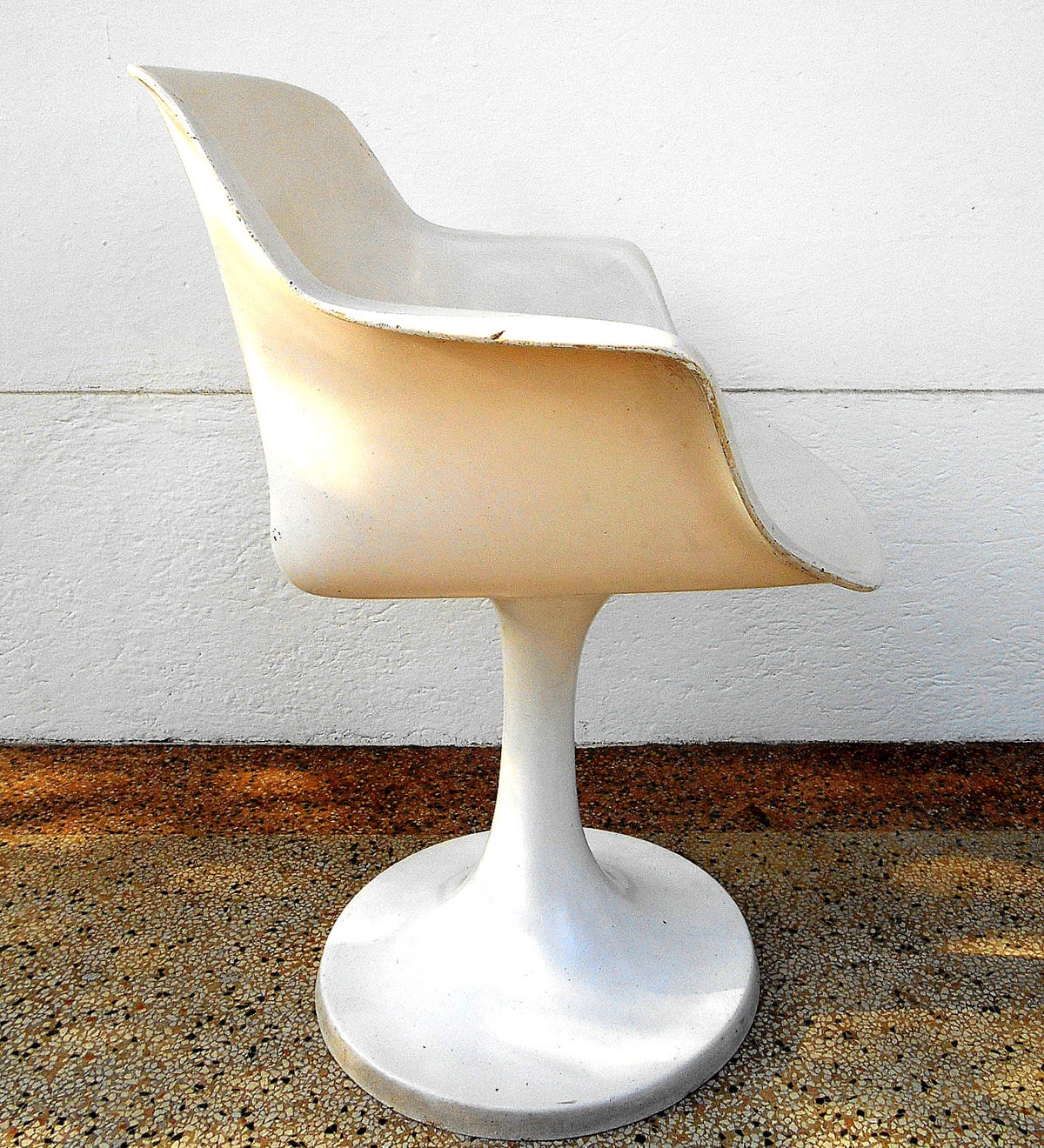
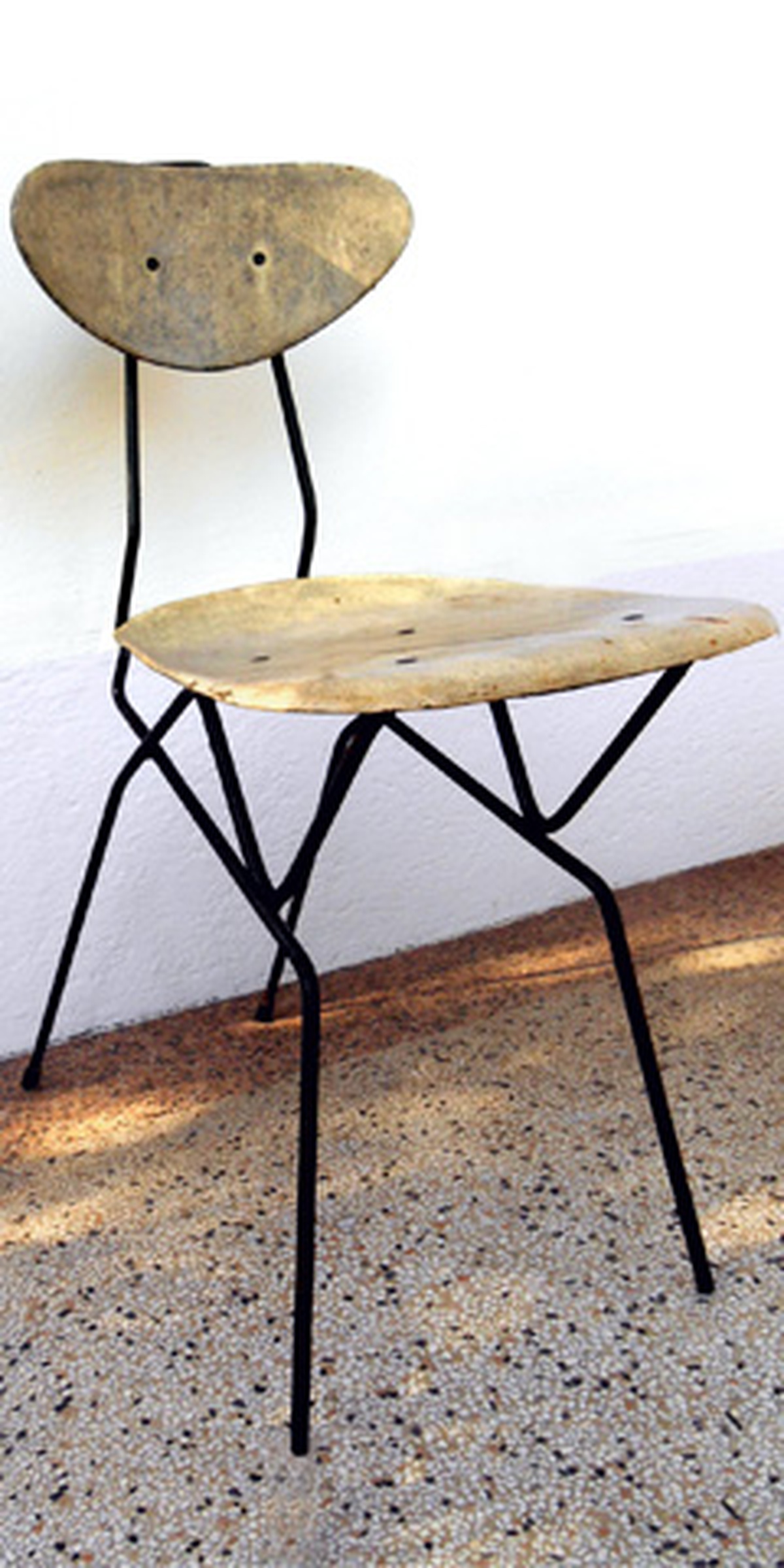
Below: the generously sized chair designed by Borgnolo reflects the typical 70s dimensions. This prototype investigates the possibility of bonding the metal mesh to the Vetroresina shell.
A prototype of a chair with Vetroresina© seat, one of Restel’s first moulded models, late 1950s.
Right: Vetroresina© seat and backrest assembled on a metal frame designed as a kitchen or community chair, 1950s.

Charles Eames was the first to apply Vetroresina© to the field of design, in 1948, through his La Chaise project. This material was then recognised as being suitable for industrial manufacturing especially due to its workability, which finally enabled the greatly sought-after sinuous shapes, only possible previously with wood, to be created. In 1953 Eero Saarinen designed the Tulip chair for Knoll, which featured a single central leg. This was the starting point for one of Borgnolo’s projects.
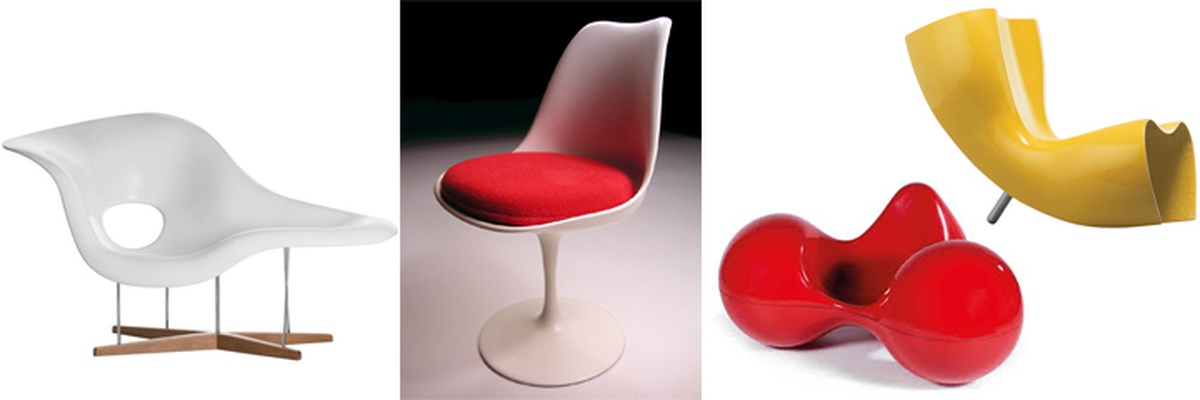
Over time, chairs manufactured in fibreglass became widespread, especially models that were not designed for mass distribution. Two examples: Tomato, designed in 1971 by Eero Aarnio and the Felt Chair designed in 1993 by Marc Newson for Cappellini.
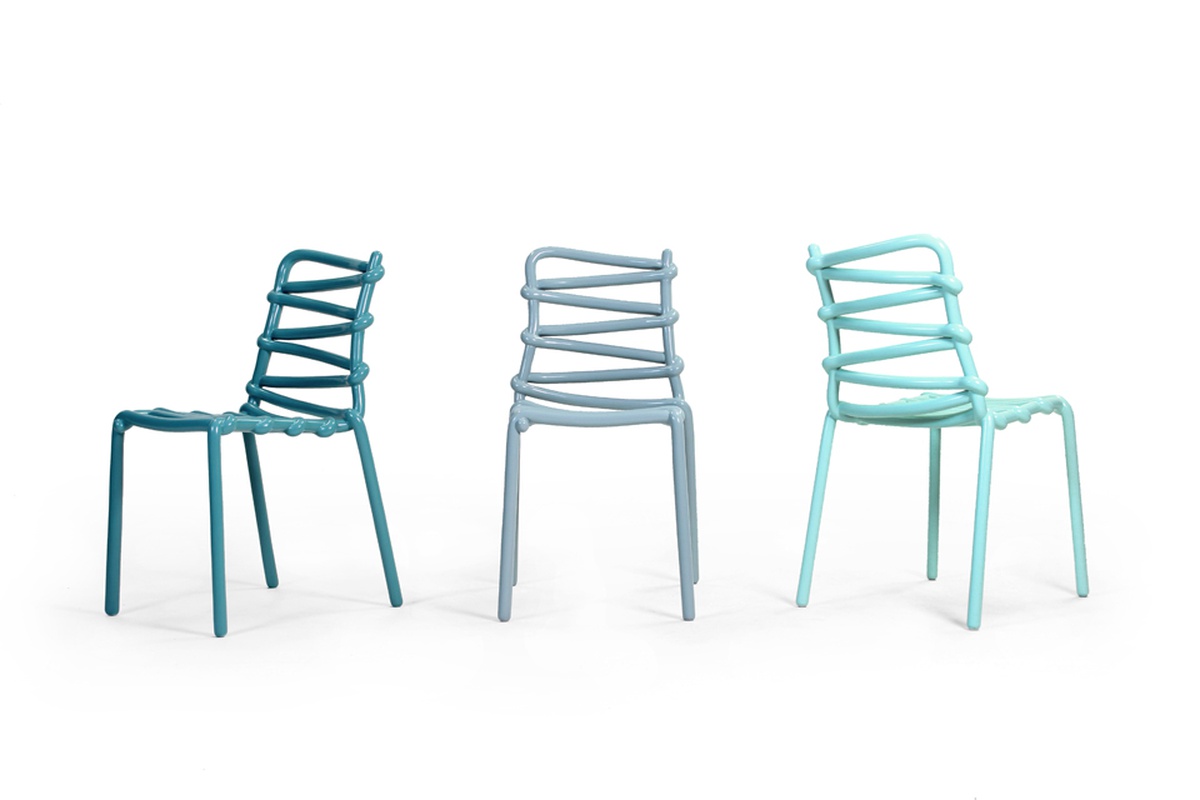
The Loop Chair by Markus Johansson, 2015, a fibreglass chair produced using 3D printing.